To comprehend the concept of digital twin frameworks, we must delve into their function as a tool in structural health monitoring of civil engineering structures, where real-time diagnostics are provided by assimilating sensor data with deep learning models.
This innovative technology essentially creates a digital replica of physical assets, processes, or systems, allowing for real-time monitoring and testing. Digital twins enable engineers to simulate and analyse conditions in a controlled virtual environment before implementing changes in the real world, thereby reducing costs and risks.
The integration of sensor data and deep learning models allows for precise real-time diagnostics and forecasting of potential structural issues, enhancing overall efficiency and safety.
These digital replicas are continually updated in a sequential Bayesian inference manner, reflecting the current state of the physical structure. This strategy facilitates predictive maintenance and management planning of structures, making it a valuable tool in civil engineering.
Importance of structural health monitoring
Building on the understanding of digital twin frameworks, structural health monitoring (SHM) plays a crucial role in the maintenance and management of civil engineering structures.
SHM is a process that uses real-time data collection and analysis to evaluate a structure’s condition. This critical insight helps identify potential issues before they become catastrophic, thus ensuring the structure’s safety and longevity.
The advent of digital twin technology has revolutionised SHM. By creating a virtual replica of a structure, engineers can simulate various conditions and predict how the structure will respond. This predictive capability is invaluable for maintenance planning and resource allocation. It enables engineers to identify areas that require attention and to perform preventative maintenance, thereby avoiding costly repairs or replacements.
Moreover, SHM contributes to sustainable engineering practices. By accurately tracking structural health, unnecessary interventions can be avoided, thus reducing waste and promoting resource efficiency.
Role of probabilistic graphical models
Probabilistic graphical models play a significant role in encoding the dynamics of the asset-twin system. They offer a concise graphical representation of the joint probability distribution across a set of variables and are particularly useful for handling high-dimensional problems.
Given their probabilistic nature, these models capture the inherent uncertainty in the structural behaviour of civil engineering structures and the measurement process. This makes them particularly suited for structural health monitoring (SHM), where the goal is to assess the current state of health of a structure based on the available sensor data.
In the context of a digital twin framework, the probabilistic graphical model encodes the dynamical system describing the interaction between the physical asset and its digital counterpart. The model assimilates sensor data in real-time and updates the state of the digital twin accordingly. This enables an effective predictive maintenance strategy, allowing for timely interventions and efficient management of the structure.
Deep learning in health diagnostics
Deep learning techniques have emerged as potent tools in the sphere of health diagnostics. Deep learning, a subset of machine learning, uses complex algorithms to emulate human decision-making processes, effectively revealing hidden patterns and correlations in vast datasets. These algorithms are trained to interpret sensor data from structures, identifying signs of deterioration or damage.
Deep learning models can provide real-time health diagnostics, updating the state of the digital twin sequentially in line with Bayesian inference. This approach has transformative potential for the management and maintenance of civil engineering structures, by detecting structural issues early, it facilitates predictive maintenance, reducing the risks and costs associated with unexpected failure.
While the integration of deep learning into the digital twin framework is a complex process, it represents a crucial advancement in structural health monitoring. With further development and refinement, these techniques could significantly enhance the safety, efficiency, and longevity of our infrastructure.
Predictive maintenance strategies
Predictive maintenance strategies are transforming the traditional approach to structural health monitoring by enabling timely identification of potential issues, thus averting costly and hazardous structural failures. Civil engineering structures, like bridges and buildings, are now equipped with sensors that feed real-time data into the digital twin system.
It serves as a predictive tool, using data and complex algorithms to forecast potential structural problems before they occur. Therefore, they not only prevent catastrophic failures but also optimise maintenance schedules, ultimately saving time and resources.
Artificial Intelligence and Machine Learning are pivotal in this process, as they facilitate the analysis of vast amounts of data and the identification of patterns that might indicate a possible issue. These techniques enable the creation of a probabilistic graphical model, which represents the asset-twin dynamical system and assists in the prediction and diagnosis of structural health.
Data availability and resources
It is essential to consider the crucial role of available data and resources. The digital twin framework requires diverse, high-quality data to accurately mirror the physical system and predict future conditions. This data can originate from various sources, such as sensors embedded in the structure, environmental data, and historical maintenance records.
It is also critical to have robust computational resources to support the data processing, analysis, and machine learning algorithms that underpin the digital twin technology. These resources ensure the timely and effective implementation of predictive maintenance strategies.
Advancements in cloud computing and data storage solutions have made it easier to manage, process, and analyse the vast amounts of data required for digital twins. Open-source software and public repositories, such as the Redbkit for finite element simulation, further support the development and implementation of digital twin frameworks.

